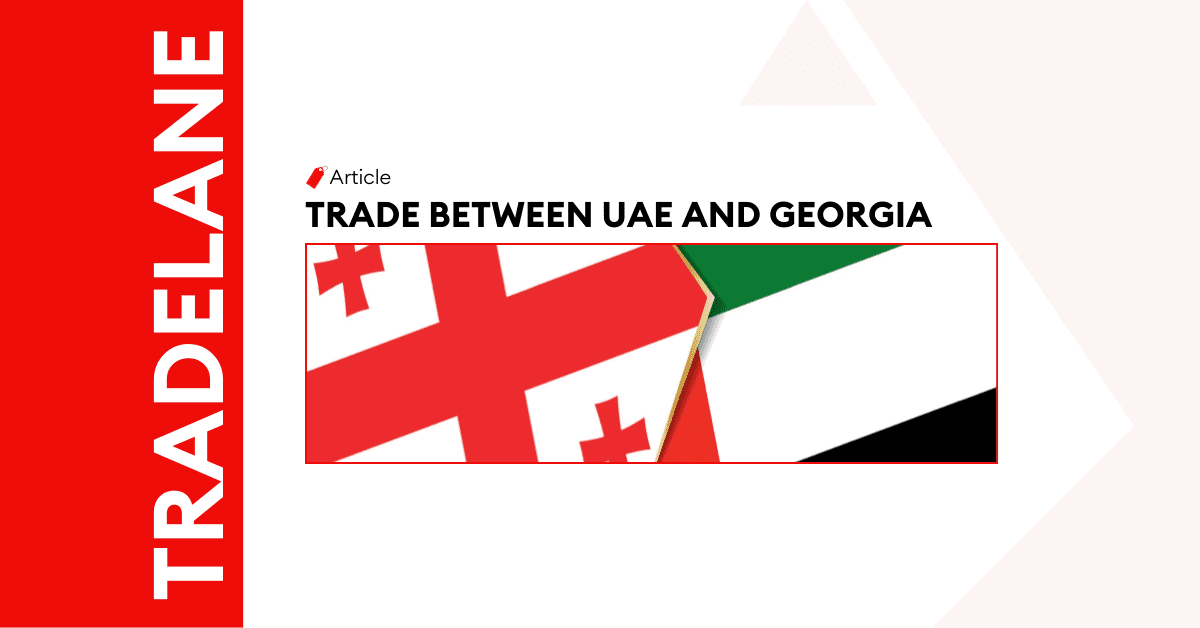
Trade Relations Between UAE and Georgia – A Comprehensive Overview
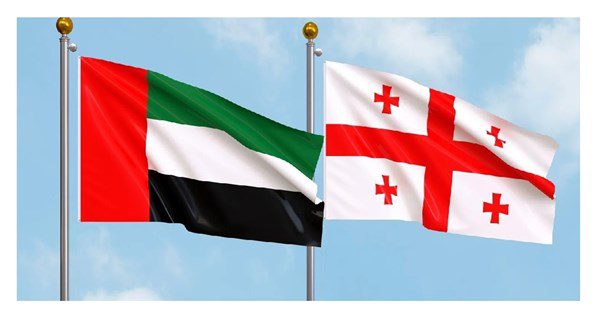
The trade relationship between the United Arab Emirates (UAE) and Georgia has seen remarkable growth over the past few years. In 2022, the UAE exported goods worth $151 million to Georgia, while Georgia’s exports to the UAE amounted to $68.3 million. This economic partnership is poised for further expansion with the Comprehensive Economic Partnership Agreement (CEPA) between the two nations. This guide provides an in-depth look at the trade history, key exports and imports, major seaports and airports, and shipping routes between the UAE and Georgia. Additionally, it highlights the documentation requirements for trade and the benefits of the CEPA agreement.
Trade History of UAE and Georgia
Export And Import from UAE To Georgia
In 2022, the UAE exported around $151 million to Georgia; the main products were Broadcasting equipment at $155 million, Rolled Tobacco at $20.3 million, and Cars at $11.9 million. In the last 5 years, the trade from UAE to Georgia has increased at an annual rate of 202%, reaching $151M in 2022 from $606K in 2017.
Export And Import from Georgia to UAE
The trade between Georgia and the UAE in 2022 was recorded at $68.3M, and the main products that contributed in that along with their sum include: Cars ($11.3M), Gold ($2.23M), and Hand-Woven Rugs ($2.1 M). Over the last 5 years, the trade from Georgia to the UAE has increased from $115K in 2017 to $68.3M in 2022, increasing at annual rate of 259%.
This significant increase in trade volume reflects the strengthening economic ties and the growing demand for Georgian products in the UAE market.
Comprehensive Economic Partnership Agreement (CEPA) Between UAE and Georgia
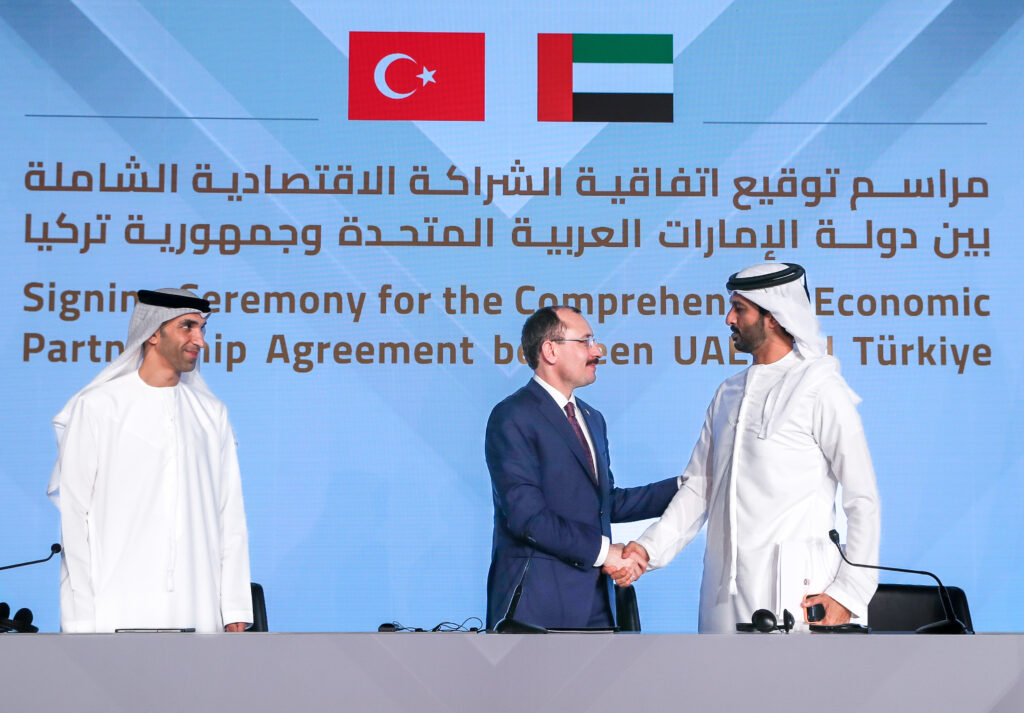
Overview of the UAE-Georgia CEPA Agreement
The Comprehensive Economic Partnership Agreement (CEPA) between the United Arab Emirates (UAE) and Georgia signifies a robust development in the economic relations between the two nations. This agreement, initiated due to the increasing dynamics in trade and investment, is designed to further enhance and simplify business operations between both countries. Over recent years, the trade turnover has shown significant growth, rising by 92% in 2022 compared to 2021, with a notable increase in both exports and imports. This growth trajectory highlights the strengthening economic ties and the vast potential for further cooperation.
Key Aspects of the CEPA
Trade Target
The UAE-Georgia CEPA sets an ambitious target of reaching $1.5 billion in bilateral non-oil trade within five years of its implementation. This represents a substantial increase in the current trade volume between the two nations.
Tariff Reductions
One of the core elements of the CEPA is the reduction or elimination of tariffs on a wide range of goods. This move is expected to significantly facilitate trade between the UAE and Georgia, making products from both countries more competitive in each other’s markets.
Investment Promotion
The agreement includes provisions to promote and protect investments from both countries. This is likely to create a more favorable environment for businesses and investors looking to expand their operations in either the UAE or Georgia.
Timeline and Implementation
The CEPA was signed by representatives of both countries, marking the formal agreement between the UAE and Georgia to enter into this comprehensive economic partnership.
According to the information provided, the UAE-Georgia CEPA is expected to enter into force in the first quarter of 2024. This timeline allows for the necessary legal and administrative procedures to be completed in both countries.
Benefits of CEPA Agreements
Comprehensive Economic Partnership Agreements like the one between the UAE and Georgia offer numerous benefits to the participating countries:
Economic Growth and Diversification
- Increased Trade Volumes: By reducing trade barriers, CEPAs typically lead to significant increases in bilateral trade. This can contribute to economic growth in both countries and help diversify their economies.
- New Market Opportunities: Businesses from both countries gain improved access to each other’s markets, potentially leading to the expansion of existing industries and the development of new ones.
Investment and Job Creation
- Foreign Direct Investment (FDI): CEPAs often include provisions that make it easier and more attractive for companies to invest in the partner country. This can lead to an increase in FDI flows between the UAE and Georgia.
- Employment Opportunities: As trade and investment increase, new job opportunities are likely to be created in various sectors, benefiting the workforce in both countries.
Technology and Knowledge Transfer
- Innovation and Best Practices: Increased economic cooperation often leads to the exchange of technologies, expertise, and best practices between the partner countries. This can drive innovation and improve productivity in various industries.
Strengthened Diplomatic Ties
- Beyond Economics: While CEPAs are primarily economic in nature, they often lead to strengthened diplomatic relations between the participating countries. This can result in cooperation in other areas such as education, culture, and tourism.
Challenges and Opportunities
Despite the promising outlook, entering the competitive market of the UAE presents challenges such as higher production costs of Georgian products, unstable supply of agricultural outputs, and logistical hurdles. Addressing these issues will be crucial for maximizing the benefits of the CEPA agreement.
This agreement represents a significant step towards economic integration and highlights the commitment of both nations to leverage their economic potential. The focus on reducing trade barriers and facilitating easier market access is likely to spur significant economic growth and foster a closer relationship between Georgia and the UAE.
As the CEPA agreement paves the way for enhanced economic collaboration, it also opens up new avenues for investment and growth in both countries.
Why Invest in Georgia?
Georgia has emerged as an attractive destination for foreign investment, offering a unique blend of strategic location, business-friendly policies, and economic potential. Here are some key reasons why investors are increasingly turning their attention to this Eurasian nation:
Strategic Geographic Location
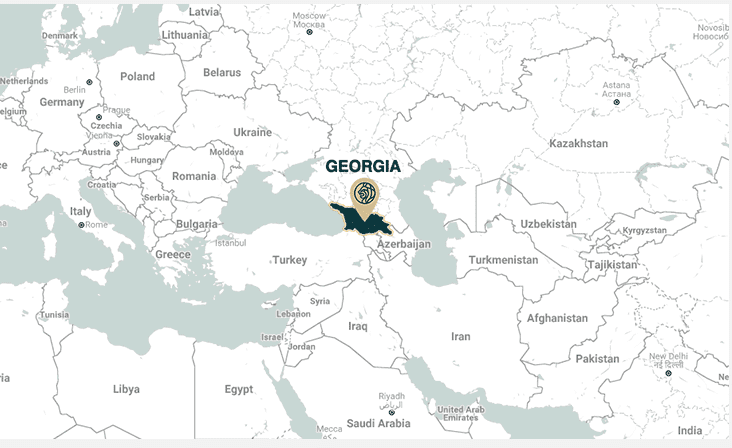
Georgia serves as a natural gateway between Europe and Asia, providing access to markets in both regions. Its position along the historic Silk Road makes it an ideal hub for trade and logistics.
Business-Friendly Environment
The country has implemented significant reforms to create a favorable business climate. Georgia consistently ranks high in ease of doing business indices, with simplified procedures for company registration, obtaining permits, and paying taxes.
Low Tax Rates
Georgia offers one of the most competitive tax regimes in the region. The country has a flat corporate tax rate of 15% and has signed double taxation treaties with numerous countries, making it attractive for international businesses.
Free Trade Agreements
Georgia has free trade agreements with the EU, China, and various other countries, providing investors with access to a market of over 2.3 billion consumers without additional customs duties.
Skilled Workforce
The country boasts a well-educated workforce with competitive labor costs. Many Georgians are multilingual, speaking Georgian, English, and often Russian or other languages.
Developing Infrastructure
Significant investments have been made in modernizing Georgia’s infrastructure, including ports, airports, and road networks, facilitating easier movement of goods and people.
Political Stability and Western Orientation
Georgia has been pursuing a pro-Western policy, aiming for closer integration with the EU and NATO. This orientation provides a sense of stability and predictability for investors.
These factors combine to make Georgia an increasingly attractive destination for foreign investment across various sectors, from agriculture and manufacturing to IT and tourism.
Understanding the regulatory landscape is crucial for investors and traders aiming to navigate the market effectively. So, here are some things that traders need to look out for if they are interested in shipping cargo between the two countries.
Restricted or Prohibited Goods in UAE and Georgia
UAE
The UAE strictly regulates the import of various items to protect its community and environment. Prohibited goods include all narcotic drugs (except as per regulations), gambling devices, counterfeit and pirated goods, and goods originating from boycotted countries.
Restricted items, which require special permits or have to meet specific conditions, include live animals, certain medications, and weapons.
Georgia
Georgia prohibits imports that threaten public health, safety, or security. This includes narcotics, arms and ammunition (with complex licensing requirements), pornography, and nuclear materials. Interested parties should seek approvals from the appropriate ministries before attempting to import restricted goods.
Ensuring compliance with these regulations is essential for smooth trade operations and avoiding legal complications.
Documentation Requirements for Trade Between Georgia and UAE
General Documentation Requirements
Commercial Invoice
- Must include a detailed description of goods, quantity, unit price, and total value
- Should be in English or Arabic (for UAE) or Georgian (for Georgia)
Typically requires at least 3 copies.
Packing List
- Detailed list of package contents, including weights and measurements
- Should match the information on the commercial invoice
Certificate of Origin
- Proves the country of manufacture or production of the goods
- Must be issued by a recognized authority (e.g., Chamber of Commerce)
Bill of Lading or Airway Bill
- Serves as a receipt of goods shipped and as a contract of carriage
- Must include details of the consignor, consignee, and notify party
Specific Requirements for UAE
Import License
- Required for certain restricted goods
- Obtained from the UAE Ministry of Economy
Conformity Certificate
- Needed for some products to ensure they meet UAE standards
- Issued by approved certification bodies
Halal Certificate
- Required for food products, especially meat and poultry
- Must be issued by an approved Islamic organization
Specific Requirements for Georgia
Customs Declaration
- Detailed form declaring the nature, quantity, and value of goods
- Can be submitted electronically through the Georgia Revenue Service portal
Sanitary and Phytosanitary Certificates
- Required for agricultural products, food items, and plants
- Issued by relevant authorities in the exporting country
Technical Regulations Compliance Certificate
- Needed for products subject to technical regulations in Georgia
- Issued by accredited conformity assessment bodies
Adhering to these documentation requirements ensures a smooth and efficient trade process between Georgia and the UAE.
Major Seaports and Airports in UAE
Major Seaports and Airports in UAE
Seaports in UAE
Port of Jebel Ali
The Port of Jebel Ali is the world’s largest man-made harbor and the biggest port in the Middle East. Located in Dubai, it’s a key hub for regional and global trade with state-of-the-art facilities. The port has a capacity to handle over 20 million TEUs (Twenty-foot Equivalent Units) annually.
Khalifa Port
Khalifa Port, situated in Abu Dhabi, is a modern deep-water port that plays a crucial role in the emirate’s economic diversification strategy. It features advanced technology and has a semi-automated container terminal. The port has a capacity to handle around 15 million TEUs annually.
Port of Fujairah
The Port of Fujairah is the only multi-purpose port on the eastern seaboard of the UAE, located outside the Strait of Hormuz. It specializes in oil and bulk cargo operations. The port handles over 100 million tons of various products annually.
Mina Zayed
Mina Zayed is a major port located in Abu Dhabi city. It primarily handles general cargo, RoRo (Roll-on/Roll-off) operations, and serves as a cruise terminal. While specific cargo volumes aren’t readily available, it’s an important port for the region.
Mina Rashid
Mina Rashid, located in Dubai, was once the city’s primary port but now primarily serves as a cruise terminal. It still handles some cargo operations, particularly for smaller vessels. Exact cargo volumes are not widely publicized.
Airports in UAE
Dubai International Airport (DXB)
Dubai International is one of the world’s busiest airports for international passenger traffic. It serves as a major hub for Emirates Airlines and handles significant cargo operations. In recent years, DXB has processed over 2 million tons of cargo annually.
Abu Dhabi International Airport
Abu Dhabi International Airport is the second largest in the UAE and the home base for Etihad Airways. It features state-of-the-art facilities for both passenger and cargo operations. The airport handles hundreds of thousands of tons of cargo each year.
Dubai World Central (DWC)
Also known as Al Maktoum International Airport, DWC is set to become the world’s largest airport. Located in Dubai South, it currently handles mainly cargo operations and some passenger flights. At full capacity, it’s expected to handle 16 million tons of cargo annually.
Sharjah International Airport
Sharjah International Airport serves as the main hub for Air Arabia. It handles both passenger and cargo traffic, with a focus on low-cost carriers. The airport processes hundreds of thousands of tons of cargo each year.
Ras Al Khaimah International Airport
RAK Airport is a growing facility serving the northernmost emirate of the UAE. It caters to both commercial and private aviation, with increasing cargo operations. Specific cargo volumes are not readily available.
Fujairah International Airport
Fujairah International Airport, located on the UAE’s east coast, serves both civilian and military operations. It’s becoming increasingly important for cargo operations due to its strategic location. Exact cargo volumes are not widely publicized.
Al Ain International Airport
Al Ain International Airport, located in Abu Dhabi Emirate, serves the city of Al Ain. It handles both domestic and international flights, with growing cargo operations. Specific cargo volumes are not readily available.
Major Seaports and Airports in Georgia
Seaports in Georgia
Batumi Seaport
Batumi Seaport features five terminals and eleven berths, including a Conventional Buoy Mooring (CBM) system. It has a draft range of 9-12 meters, extending up to 20 meters for CBM. Annually, the port handles a throughput of approximately 18 million tons, serving as a key node in Georgia’s maritime logistics network.
Poti Seaport
As Georgia’s largest port, Poti Seaport manages diverse cargo types, including containers, liquids, and dry bulk. It has 15 berths, over 20 quay cranes, and 17 km of rail track. The port’s annual handling capacity is being expanded significantly, with major investments aimed at accommodating larger vessels and increasing container throughput.
Mina Rashid
Mina Rashid, located in Dubai, was once the city’s primary port but now primarily serves as a cruise terminal. It still handles some cargo operations, particularly for smaller vessels. Exact cargo volumes are not widely publicized.
Airports in Georgia
Tbilisi International Airport
Located in Georgia’s capital, Tbilisi International Airport has been operational with a new arrivals’ terminal since 2017. It caters to about 30 airlines, connecting approximately 30 destinations primarily in Europe, the Middle East, and Central Asia. The airport has seen a significant increase in passenger numbers, growing from 1 million in 2010 to nearly 4 million
Kutaisi International Airport
Kutaisi Airport, known for its affordability, connects passengers to numerous European destinations. The new terminal expanded to 27,000 m² in 2021, increasing its capacity to 2.5 million passengers annually. It ranks second in Europe for passenger growth among airports handling fewer than 5 million passengers per year.
Shipping Routes from Georgia to UAE
Air Cargo from Georgia to UAE
Tbilisi Airport to Abu Dhabi International Airport
This is the quickest way to transport cargo from Georgia to the UAE, taking about 6.8 days. The Freight Rate Index of this route is about 29.897 with 2 transshipments.
Ocean Cargo from Georgia to UAE
Batumi Port to Abu Dhabi Port
The shipments take around approximately 39.9 days. Furthermore, there are three transshipments along the route, with a Freight Rate Index of 5.341.
Poti Port to Abu Dhabi Port
The shipments on this route have a transit time of about 39 days, with Freight Rate Index of 5.366 and 3 transshipments along the way.
Road Freight from Georgia to UAE
Tbilisi to Abu Dhabi
Excluding air freight, this is the fastest shipping route for cargo from Georgia to the UAE. It takes a total transit time of around 7 days.
Shipping Routes from Georgia to UAE
Air Cargo from UAE to Georgia
Abu Dhabi International Airport to Tbilisi Airport
The Freight Rate Index for this route is recorded at 27.638 with a total transit time of 6.8 days, including 2 transshipments.
Ocean Cargo from UAE to Georgia
Abu Dhabi Port to Batumi Port
This route has a Freight Rate Index of 4.305 and total transit time of approximately 38.9 days, with 3 transshipments.
Khalifa Port to Batumi Port
This route takes approximately 38.9 days with 3 transshipments and the Freight Rate Index of 4.301.
Road Freight from UAE to Georgia
Abu Dhabi to Tbilisi
This road freight route has a transit route of about 7 days with Freight Rate Index of 6.024. Excluding air freight, this is the fastest shipping route.
Conclusion
The trade relationship between the UAE and Georgia is a testament to the dynamic economic ties between the two nations. With the implementation of the CEPA agreement, trade volumes are expected to grow significantly, offering numerous opportunities for businesses in both countries. The strategic investments in infrastructure, coupled with favorable trade policies, will further enhance the economic partnership, benefiting various sectors and fostering stronger bilateral relations. As both nations continue to leverage their economic potential, the future of UAE-Georgia trade looks promising and poised for substantial growth.
Related Articles
UAE-Russia Trade Lane: Comprehensive Insights and Analysis
Introduction The trade relationship between the UAE and Russia has grown substantially through strat
Trade Relations Between UAE and Georgia – A Comprehensive Overview
The trade relationship between the United Arab Emirates (UAE) and Georgia has seen remarkable growth
In-Depth Guide to UAE-Armenia Trade Relations
Introduction The trade relationship between the UAE and Armenia has seen substantial growth in recen




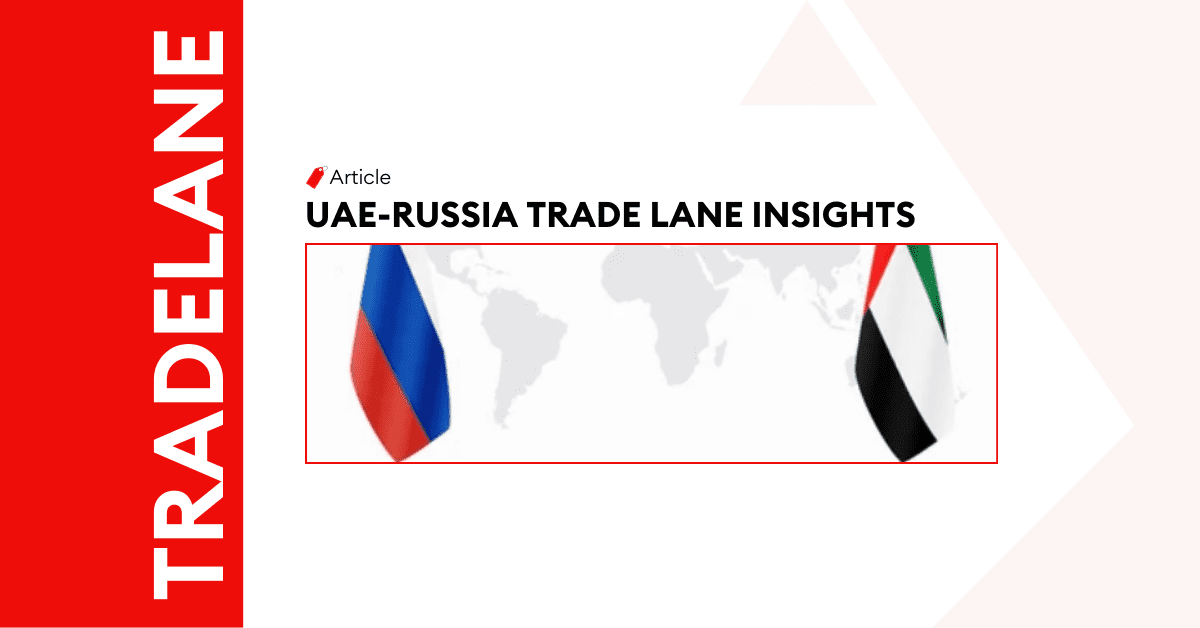

Post a comment
You must be logged in to post a comment.